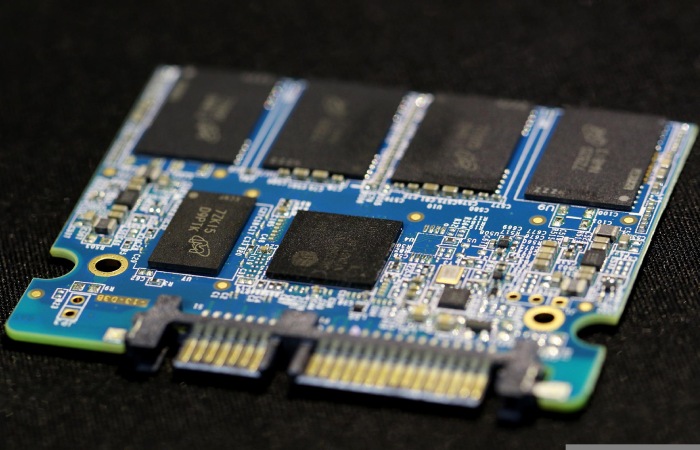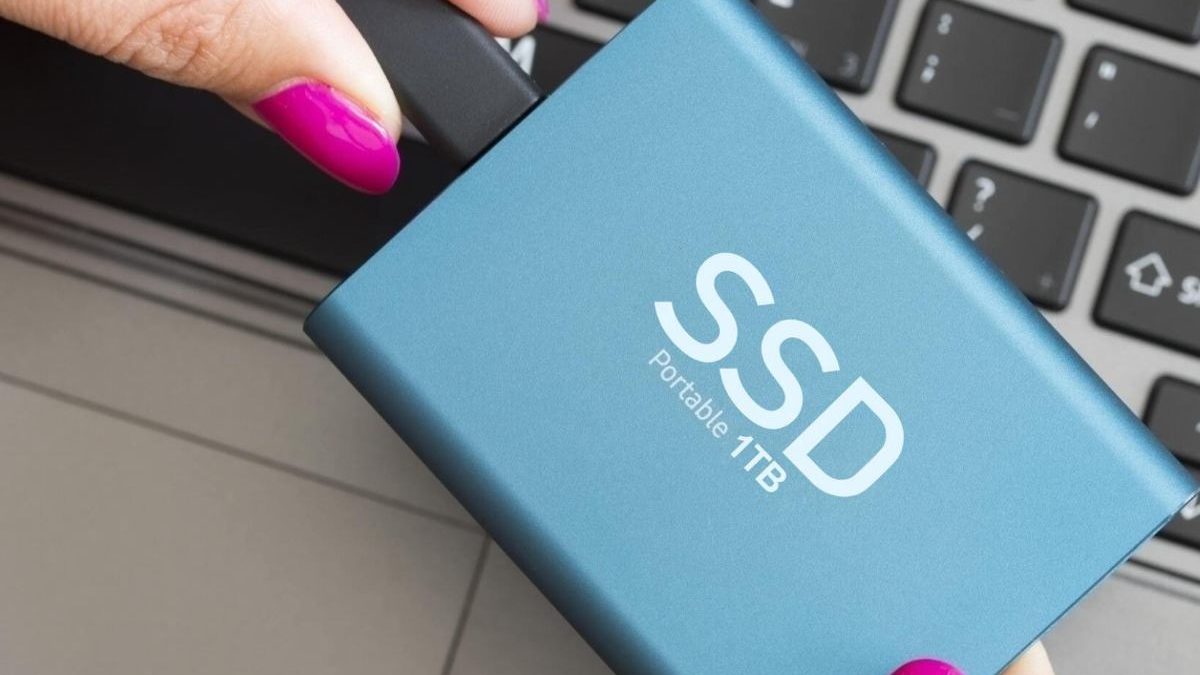Table of Contents
Introduction
It’s important to think about your needs when buying an SSD and what to look for when upgrading or moving from a regular HDD to one. The information in this guide is crucial for choosing the best SSD.

1. STORAGE CAPACITY
It is necessary to make a significant difference in how SSD and hard disks work.
While the latter has to deal with disk fragmentation (a non-existent problem in SSDs), SSDs suffer from another issue, the so-called “garbage collection.”
The data are called “chunks” pages on an SSD. A page group is a defined block.
The pages in a partnership could be empty, complete, or half full and half empty. To be able to write new data to an already occupied block, the entire block must delete.
Also, to prevent data loss, any information in the block move elsewhere before the block clears.
Once the data moves and the league removes, new data writes to a previously occupied block.
This process, called “garbage collection,” requires space. If you don’t have enough space available, the process loses efficiency and slows down.
It is one of the details why the performance of an SSD decreases over time: it gets too full.
The advice gives a percentage of the drive to keep empty between 20 and 30% of its capacity.
Also, make sure, to keep the SSD in perfect working order and prolong the life of the SSD, that the command TRIM is activated: you can find out by installing the management software offered by the manufacturer in the package.
2. SSD Flash Memory
Solid-state energies base on flash memories, unlike NAND memories. The table under will give us a quick analysis of current technologies in the market.
In SSD, the scope of improvement is not mature yet; manufacturers are bringing advanced technologies and efficient manufacturing techniques every day to improve the life and performance of their drive.
3. SSD Endurance MTBF (Reliability)
Mean Time Between Failures (MTBF) is the manufacturer’s estimate of the total running hours of product shipped divided by the number of failed units.
Long MTBF is always a helpful indication but no guarantee that the product can last that long.
The reliability for SSDs falls in the range of a couple of million hours. If you are not aware of tweaking your SSD, please check the Tools to Tweak-SSD and Recover Performance Back on Your Laptop.
4. SSD TRIM Support
TRIM support help to keep SSD’s performance the same all the time by cleaning the deleted files.
This process of performing background garbage collection reduces latency and improves drive performance.
For most modern Windows and MAC OS, the SSD TRIM will take care of itself. But SSD for old OS like Windows XP, you have to buy a disk that provides TRIM feature built-in with SSD.
5. THE PRICE
The prices of SSDs have plummeted in recent years; today, you can buy a 500 Gb model for just over 100 euros. The mechanical equivalent takes away about forty euros.
The price difference is enormous, but also in terms of performance. Therefore, the purchase of an SSD is firmly recommending.
6. Physico-chemical attributes
You should always be careful of potential incompatibilities when purchasing new gear.
If you can’t mount the finest SSD on the globe, it won’t do you any good. Fortunately, SSDs are quite standardized, so long as you keep a few things in mind, there shouldn’t be any issues:
– Form factor: Most SSDs have a 2.5-inch form factor, the same as notebook hard drives.
Such a drive is not suitable for desktop PCs with 3.5-inch slots, but a few euro adapters can quickly solve the problem.
Recently the M.2 format is taking hold: they are RAM-like drives, very thin and tiny, perfect to be inserted in ultra-thin notebooks and mini PCs (as well as in regular PCs).
– Thickness: be careful because, although the 2.5-inch form factor is a standard, it does not mean that it will necessarily fit in your notebook.
Typical thicknesses are 9,5 and 7mm (lately, we tend to prefer the latter size): in this regard, consult the laptop manually. You will also have to consider the internal space available.
– Interface: Consumer SSDs almost all have a Serial ATA (SATA) interface; the choice between 3 Gbps or 6 Gbps depends on the speeds your computer can handle.
– Noise: a benefit of SSDs on old mechanical hard drives is given by the total silence of operation, free of moving parts.
7. PERFORMANCE
The main advantage of an SSD over a mechanical hard drive is that they are significantly, dramatically faster. With SSDs, your PC boots in seconds, programs start almost instantly, and files transfer up to 10x faster.
Not all SSDs are the same, though. Some have (for example) significantly different read and write speeds (and consequently also the price). It is up to you to select whether one is indispensable or a secondary factor for you to decide on one of the additional purchases.
8. LONGEVITY
The last aspect to consider is the actual life of the SSD. We said SSDs don’t have to move mechanical parts, unlike mechanical hard drives. Hence, there are no parts that wear out either.
The disadvantage, however, is that SSDs are more sensitive to power surges. And if the power fails while the drive is writing, the data could be corrupted, or the device could break.
Furthermore, the memory blocks in an SSD can write a limited number of times. If you write data continuously (on the order of whole Giga per day), the drive may lose its ability to write altogether (but not to read, fortunately).
The estimated life of an SSD is between 5 and 7 years. With each passing year, of course, the chances of “failure” increase.
TO BUY THEM OR NOT TO BUY THEM THEN?
If you’re on a tight budget and don’t care too much about super-fast speeds, or prioritize data reliability, stick with traditional hard drives. Otherwise, we strongly suggest you upgrade to SSDs today.
Conclusion
Now that you understand all the essential details that separate SSDs and SSD types, your choices should be clear.
Remember that high-end drives, while technically faster, won’t often feel speedier than less-spendy options in everyday tasks.

